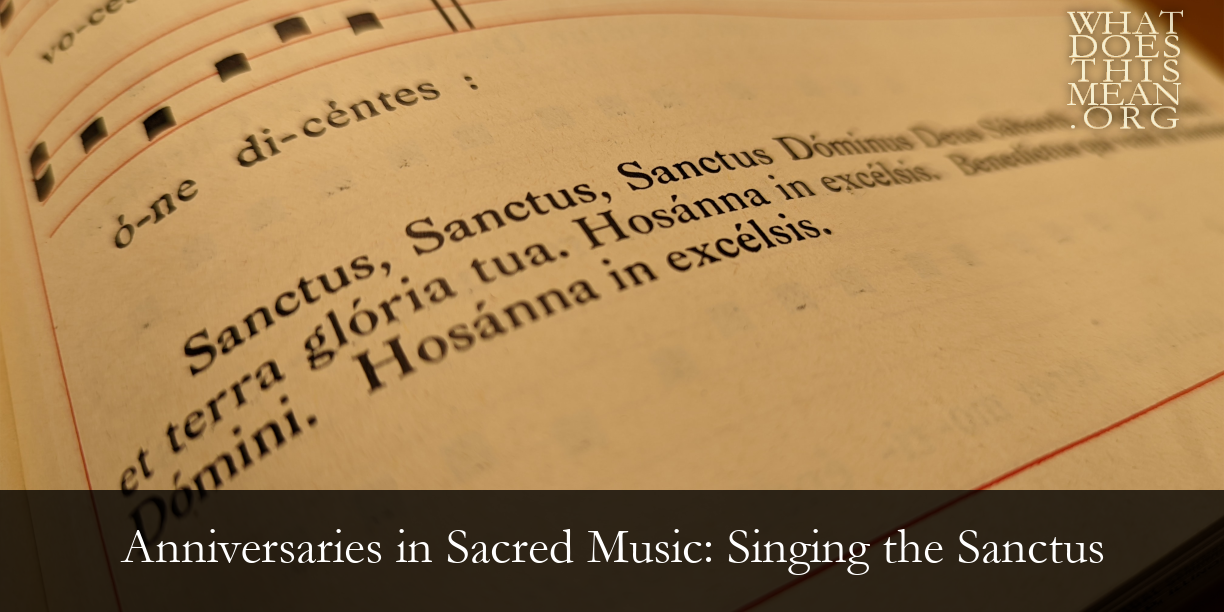[The Sanctus] was sung by the angels when Isaiah the prophet was called by the Lord to preach repentance and the forgiveness of sins to sinners (Isaiah 6). In Isaiah’s vision we are taught that heaven, which had been closed to us because of sin, is now open for the sinner through the good news of Christ’s forgiveness. This forgiveness is given to us in the Word of Christ which comes to us in His gifts of preaching, Baptism, Absolution, and the Lord’s Supper. (Lutheran Catechesis, p. 107)
The Sanctus, then, places two Old Testament texts and their New Testament fulfillment in the Lord’s Supper before the composers, with manifold opportunities to paint the sacred text in vivid musical colors. Frank Martin (1890–1974) and Ralph Vaughan Williams (1872–1958) do not disappoint.
Martin takes what I like to call the “Isaiah view” of the Sanctus. Isaiah stood in abject fear before the Lord, knowing that when God’s holiness and man’s sinfulness collide, mere mortals get burned. The music begins in hushed and quiet tones, with gently unfolding melodies and softly clashing dissonances. The music changes abruptly at 2:15 (“full are the heavens and the earth of your glory”), depicting what I call the “heavenly view” of the Sanctus: lively rhythms and joyful counterpoint between the two choirs depict God’s heavenly glory as it fills all creation. As for the “Blessed is he” section (starting at 3:10), Dale Warland probably said it best: “The hushed second choir chants the word [“Benedictus”] in four-square rhythm, while the harmonies of the first choir slide loosely above—like water over ice” (ACC CD 120 liner notes). Both choirs converge with the suppliant cry, “Hosanna,” that is to say, “Save us now,” the ceaseless petitions of mere mortals who seek refuge in the Holy One of Israel.
After you have listened to both settings of the Sanctus, I invite you to consider the primary differences between them and to join the conversation in the chat window below.
| Sanctus, Sanctus, Sanctus Dominus Deus Sabaoth. Pleni sunt cæli et terra gloria tua. Hosanna in excelsis. Benedictus qui venit in nomine Domini. Hosanna in excelsis. | Holy, holy, holy, Lord God of Sabaoth. Full are the heavens and earth of your glory. Hosanna in the highest. Blessed is he who comes in the name of the Lord. Hosanna in the highest. |
Taken together, both composers—though unaware of the other’s parallel composition until decades after writing them in the 1920s—paint a profound picture of the union of heaven and earth in the Sanctus. As Jesus took our humanity into His Divinity (Athanasian Creed), so the angels and archangels gladly receive the song of Christian pilgrims every time we lift our voices to declare the holiness of the Lord. Again from Peter Bender:
The Sanctus is the song of praise sung to our gracious God, because the Son of the Father has chosen to condescend to us who could not save ourselves, and in His flesh and blood to offer the sacrifice once and for all to take away sin. This is why angels sing and this is why we sing. (Lutheran Catechesis, p. 108).
Extra Choral Credit
Hearing RVW’s Entire Mass in G minor
Featuring the Choir of Christ Church, Oxford
This is the sound that RVW had in mind when he wrote his Mass in G minor. In fact, it might have been the only choral sound that RVW knew for sacred music at the time (female sopranos have become more common in the century past), so it seems fitting to highlight the following performance of his setting, as sung here by the Choir of Christ Church, Oxford, under the direction of Stephen Darlington. Their performance reminds me of the following description of the first performance of the Mass in G minor: “While [RVW’s Mass] offers no occasion for violent brilliance, the best choirs will find it a field for endless refinements, and the more carefully they have toiled the more will the listeners think the music natural, helpful, and self-forgettingly devout” (The Musical Times 64:959, p. 37).



 RSS Feed
RSS Feed
